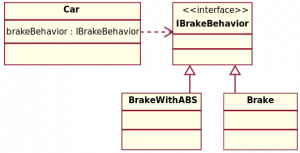
As much as we would all like to believe that programming is about logic, not feelings, being able to deal with your emotions is incredibly important if you want to be a better programmer. For example, one of the best things you can possibly do for you career is to learn to take criticism. Logically everyone should be thrilled to get feedback on their work but you know what gets in the way? Yep, it’s emotions.
It can suck to hear all about what’s wrong with your code, especially if you worked really hard on it and thought that this time you finally got it right. Hearing about what you need to improve is incredibly helpful (who has time to make every possible mistake on their own? that would take forever!), but that doesn’t mean it never hurts your feelings. And when people’s feelings are hurt, it’s really hard for them to listen. Sometimes emotions get in the way of your improvement as a developer.
So how do you learn to take feedback even when it hurts?
First of all, you’ve got to accept that it’s normal to have feelings about being told that your code isn’t good enough. There’s no fixing a problem that you can’t admit is happening, after all. That absolutely does not mean you should be ashamed of having feelings – not only is it just plain wrong to shame anyone, including yourself, for being human, but it’s a huge waste of time. All it means is that if your feelings are keeping you from being able to take feedback, you’ve got to get a handle on them. You would debug a program that couldn’t handle certain inputs, right? Sometimes your mind needs debugging too.
One way to do that is to remind yourself that feelings aren’t facts. Just because you feel attacked or like everything you do is stupid and terrible and you’re never going to be any good at this and should just crawl into a hole doesn’t make it true. That’s just your brain freaking out, if you give it a minute it will calm down. Yes, it sucks in the moment to hear that your code needs work, but you’re going to feel fine tomorrow. With practice, you’ll get used to hearing what you can improve and start skipping the boring angsting step to go directly to fixing things.
A common thing programmers do that makes that way harder is to get really really really attached to their code. You should absolutely care about whether you’re doing a good job but you’ve got to remember that your code is not you. The quality of your code has nothing to do with your worth as a human being and any one piece of code doesn’t even mean much of anything about your skills as a programmer. Everyone has off days, making a mistake does not mean you’re a bad programmer, will always be a bad programmer and should just go find a hole to crawl into. Everybody makes mistakes, you’re not that special ;)
Quick side note: code reviews are never supposed to be mean. Aside from being a tremendous dick move and thoroughly unprofessional, it’s a waste of time to be a jerk when you’re giving feedback. If people hate doing code reviews they will find ways to not do them and the quality of code on your project will suffer. If you can’t be nice because it’s right, be nice because it’s effective. And if your team lead/senior dev/whoever does your reviews can’t at least be civil, find a new job. Life is too short to put up with dicks.
Something else you can remind yourself about when you’re having feelings about a code review is that nobody gives advice to people they don’t believe can do better. If you believe someone can’t learn you don’t bother giving them a code review, you quietly fix what you can while they’re not looking and hope they eventually get fired. Bothering to give someone feedback is a statement that they’re worth the effort.
The most important piece of advice I can give you, though, is that you need to be able to take a step back both from your feelings. Meditation is great for this, by the way. I’m going to steal Headspace’s traffic metaphor here because it’s really good: training your mind isn’t about forcibly clearing it, it’s about learning to watch your thoughts and feelings go by like cars on the road and not needing to run out into the street and direct traffic. Having a feeling doesn’t mean you have to do something about it right then, you can wait a bit and see if it’s still important.
That stepping back thing is useful for more than just code reviews, too. Professional software development can be really frustrating for reasons that have nothing to do with writing code. Features get changed or cut, projects get dropped, companies change direction, sometimes things never make it into production no matter how much you believe in them or how hard you try. If you can’t step back from your attachment to a project and accept that things don’t always go the way you wish they would or even the way they logically ought to, you’re going to have a bad time in this field (or any other for that matter).
While you’re at it, literally step away from the computer now and then and do something else. Not only can you become a better programmer and still have a life, but having a life will make you a better programmer. Nerds tend to hyperfocus, which is great when you have a concrete task to get done but not quite as great when you lose all sense of perspective because you do nothing but code all day. Having other things you’re good at and other things to look forward to really helps put that one bad code review into perspective.






